Mushrooms and Other Fungus Among Us
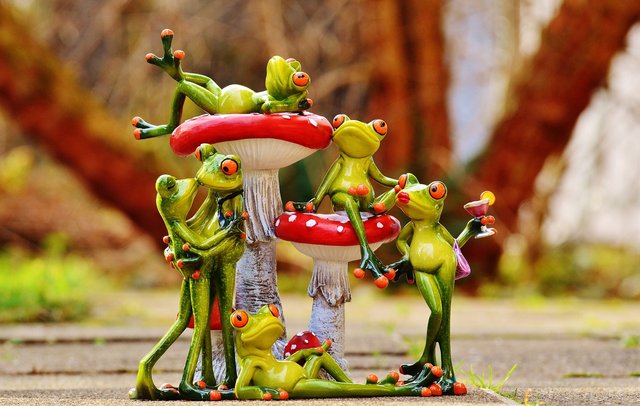
You may have seen them, eaten them, or been told that certain kinds are poisonous. But what is a mushroom? It’s not an entire organism. It’s merely the fruiting portion of a kind of fungus.
Most of the organisms that produce mushrooms grow beneath the soil or beneath some other substrate like leaves or wood chips. Beneath the surface, the organism sends out strands of mycelium. If you have ever grown mushrooms or dug underneath them, you might have noticed the thin white strands of fiber that are part of this fungus. They look slightly like fibrous mold.
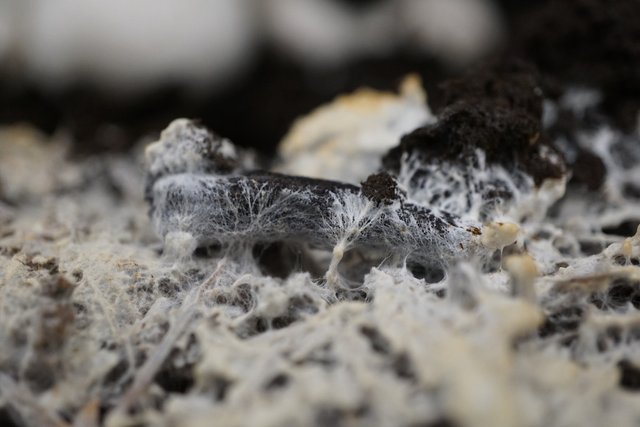
Mushrooms are a sign of healthy soil. In fact, if you pick up a cupful of healthy garden soil, there might be MILES of mycelium strands just within that cupful of soil (no, don’t eat it). These are amazing organisms. Molds and yeasts also belong in this large family or organisms along with mushrooms.
If you’ve every grown mushrooms from a kit, you might have learned that some – like oyster mushrooms – can grow in just about any substrate, such as sawdust or used coffee grounds. Other kinds of mushrooms grow in hardwood, either living or (more commonly) dead or dying wood. In fact, that highlights their main importance in a healthy ecosystem, which is to reuse and recycle nutrients back into the soil.
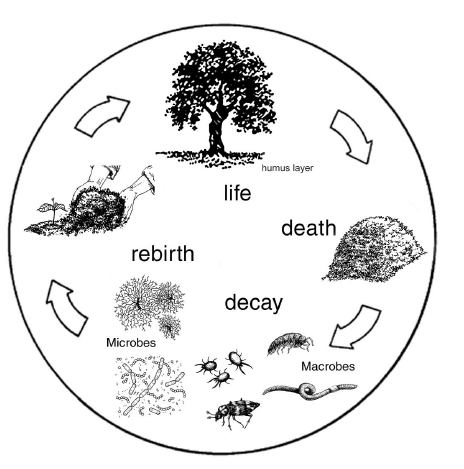
When old plant or animal matter decomposes (as with compost, which is old food waste), fungus plays a role in breaking it down into smaller bits. Within months or years, depending on the items and the climate, most items will return to the earth and look much like the soil around them. This is thanks in no small part to the work of the molds and yeasts and mushrooms, along with bacteria and other organisms like earthworms, which break it down into components that can be used again by plants.
In a few months’ worth of walks through the woods, I have taken a number of photos of mushrooms. Since this has been the warmer part of the year, there aren’t many growing on the ground, which has been mostly dry. But here are a couple of 'shrooms that I found growing on a suburban lawn, under a shady tree and near a sprinkler head that supplies moisture.
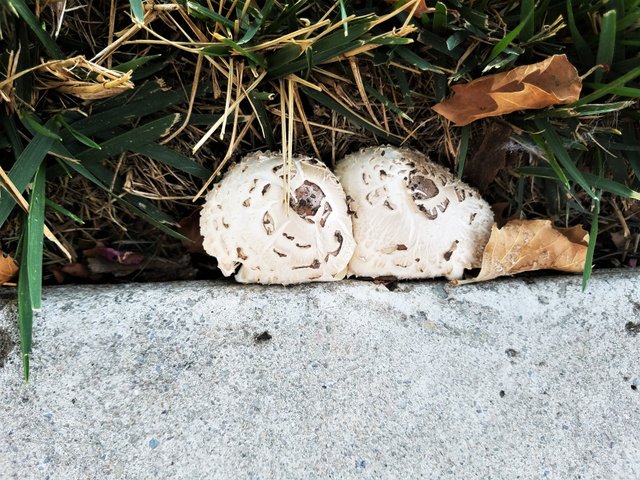
Most of my pictures here are of fungi on fallen tree trunks. This one looks like it was once a fir or pine tree. Now it is covered with ‘shrooms.

Here is a tree that fell over. But it probably has no mushrooms on it because it kept growing after the fall. Look at these branches growing upwards towards the light.

These holes were made by woodpeckers. I’ve posted about woodpeckers before, but haven’t seen any recently. These birds make holes in the trees for insects to live in or in which to stuff acorns and other nuts; either way, it becomes an easy meal in the future. They usually choose old and dead tree trunks for this also, so they do their part to help break down the old wood over time.
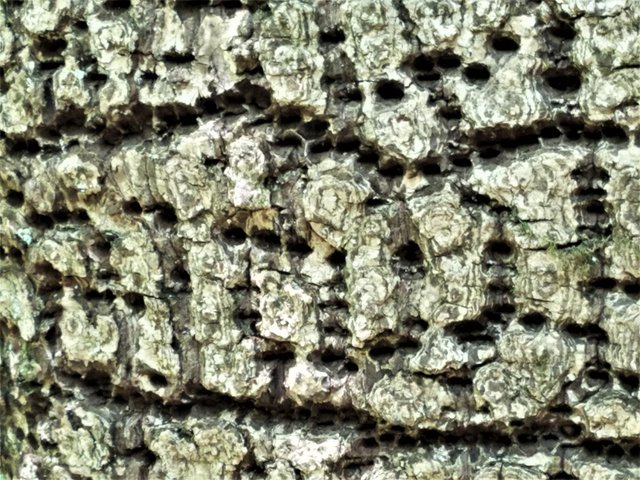
Here are some fallen trees; the largest one is a redwood tree. The last of these pictures shows a log with some crusty white growth, which is probably some fungus or lichen. More about lichen shortly.


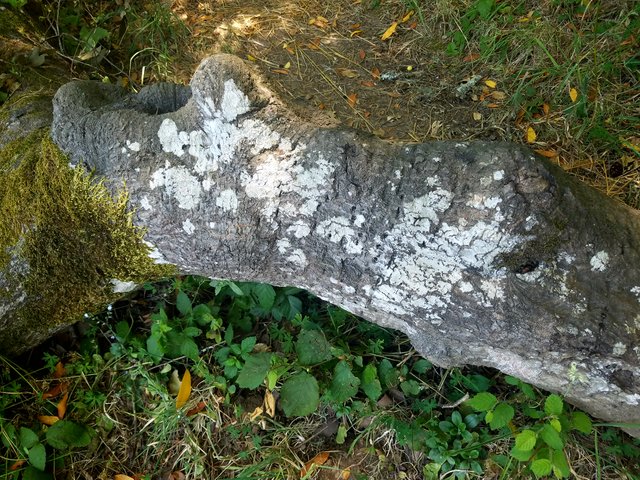
Now let’s see what’s growing elsewhere on these logs.

Some of these look like shelf mushrooms, which is my generic term for them.
Others start to look like sea slugs or melting ice cream sandwiches. But I sure wouldn’t eat them.



Since I’m not an expert, I have no idea what kinds of fungus I’m looking at here. Eating one of these might kill you or it might cure cancer. Science has barely tapped into the possibilities as far as using mushrooms for health, but some of them are quite toxic as well. I’ll keep my distance.
Here is a cypress tree growing right near the ocean. As you can see, there are ferns and mosses growing in the branches. They may be epiphytes, which grow there with available soil and water, and do not hurt the tree. Of course, it’s possible that a plant on a branch could be parasitic in that it takes nourishment from the tree itself.

Below the ferns, you can see some lighter colored lichen on the branch. Lichen is a community of organisms that grows together; it may include fungus, algae, and bacteria which exists in synergy.
Finally, check out this cliff. The soil on the hill eroded to expose the bedrock underneath. On the rock face, you can see another community of lichen. This time, it’s orange rather than light green or white.

And rather than breaking down wood, this community of fungi and other organisms is working on the rock itself. Perhaps it had some small role in creating this crack in the rock. And that, in turn, provides a spot for something else to grow.

This small salal plant is quite happy to have gained a foothold here. Native Americans used the berries of the salal plant for food. Birds, hikers, raccoons, and even bears enjoy these berries also.
I did not get a picture of salal berries, but here is a blackberry bush that was growing near some of the shelf mushrooms, quite possibly using some of the nutrients that previous fungi helped to recycle back into this soil. Animals and people also pick the blackberries when they get darker and ripen.
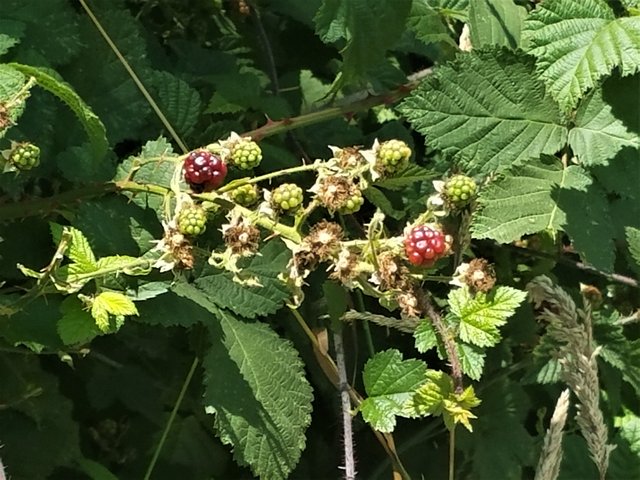
When the plant leaves fall or the berries are deposited on the ground, another fungus plays a role in decomposing them. And the cycle begins again. Life is amazing.
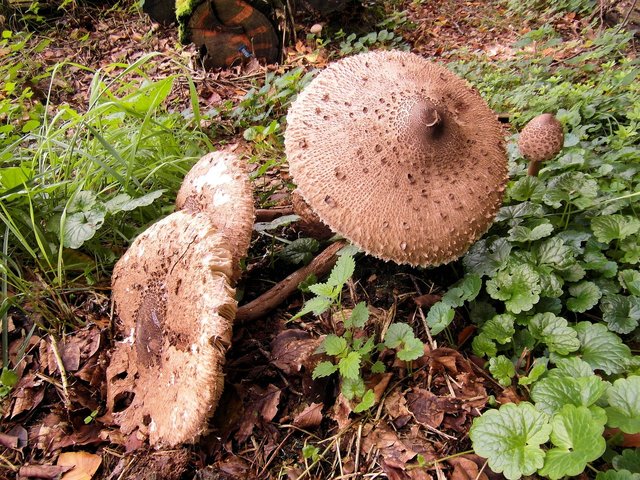
All photos by the author except for top picture (frogs), second picture (mycelium), and last picture (mushrooms in soil). Those three are public domain.
In the lab of microbiology we used to study on fungus growth by using experimental method.. This post remind my old days. Crusty white fungus/lichens look interesting.
Great, and you took the pictures.
Circle of life. We all share the same elements, whether here or out in the universe. Whether animal, plant, insect or deep sea creature, we use the elements, return the elements and then return again and again and again. It's a brilliant system!
can it be eaten? I don't know if this is in my area. What is certain is that it has opened my eyes, namely the world is very wide. thank you
What I like about fungus is that some of them can be used as food but sadly most are poisonous so some people stays away from it @donkeypong But at least we can buy the good stuff from the supermarket and they are great to eat as we do not have to worry about pesticides.
Mushroom is a decomposer in biology, they are responsible for decomposing dead organic matters, if not for all this kind of this decomposer, the earth would'av been full of undecomposed matters with unbearable odour.
Its an example of fungi, named botanically as
Agaricus bisporus..
Its very delicious, hehehehe
I like the post @donkeypong
Thanks for your comment.
Mushrooms are quite healthy and tasty too.
Besides looking ugly mushrooms are highly nutritious.
And looks like you have worked hard for these photographs.
Really amazing photographs and detailed description of mushrooms.
Thanks for the comment. Glad you liked the post.
It is impressive the role so important that nature plays to make possible that fungi grow because if the soil does not have the necessary nutrients can not grow there, besides that everything is a matter of cultivating them properly! Thanks for the information is very useful :)
To be very honest I don't like them, But i want to ask you a question, Is this the same mushroom that we see on our pizza topping?
Hairy mushrooms. :) Probably not quite the same, but related.
Coincidentally, I am actually taking “olu” here. That is what it is called in my dialect. Lol
Amazing plant life cycle. Informative post as always. Thank you sir